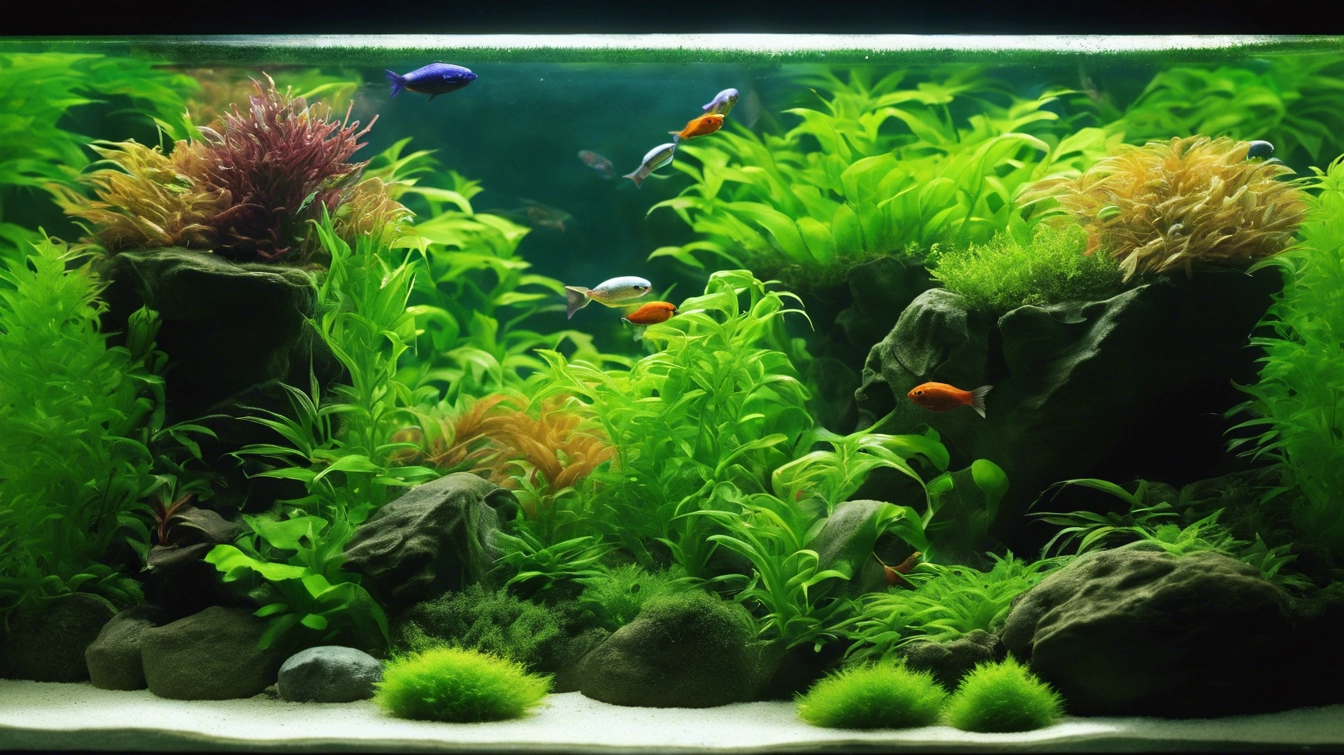Fertilizers are important in planted aquariums because they provide essential nutrients that plants need to grow and thrive. Without these nutrients, plants can become stunted or even die. Fertilizers can also help to encourage plant growth, increase plant health and color, and reduce algae.
Fertilizers provide essential nutrients such as nitrogen, phosphorus, and potassium that help promote healthy plant growth. In addition, they help maintain the proper pH balance in the aquarium water, and they can be used to correct nutrient deficiencies. Fertilizers also provide additional food sources for beneficial bacteria and microorganisms, which help keep the tank clean and algae-free. Finally, fertilizers can help reduce the amount of algae present in a tank, which can be beneficial for fish health.
In this article, we will see what different nutrition does in a planted aquarium.
Macro and Micro fertilizers
Macro and micro fertilizers are essential for a planted aquarium as they provide the necessary macro-nutrients to promote healthy plant growth. Without these macro-nutrients, plants cannot absorb the necessary elements to grow, leading to stunted growth and poor health. Macro fertilizers also help to maintain the balance of nutrients and can help prevent the build-up of waste in the aquarium, which can be harmful to both the fish and plants.
Planted aquarium micro and macro fertilizers usually contain macro-nutrients such as nitrogen (N), phosphorus (P), potassium (K), magnesium (Mg), sulfur (S), iron (Fe), manganese (Mn), zinc (Zn), copper (Cu), boron (B), and molybdenum (Mo). Macro-nutrients are essential for healthy plant growth and development.
We have fertilizer made in Romania, Masterline, and Treaa Made in India


Microelements / Micro Nutrition
Microelements in aquarium plant fertilizers are essential nutrients that plants need in small quantities for optimal growth and development. These elements play crucial roles in various physiological processes within the plants. Here are the primary microelements commonly found in aquarium plant fertilizers and their functions:


- Iron (Fe): Essential for chlorophyll synthesis and acts as a catalyst in photosynthesis and respiration. It is critical for healthy green leaves and overall plant vitality.
- Manganese (Mn): Involved in the process of photosynthesis, respiration, and nitrogen assimilation. It activates several important enzymes and helps in chlorophyll production.
- Zinc (Zn): Plays a significant role in the synthesis of proteins and growth hormones. It also helps in enzyme activation and chlorophyll formation.
- Copper (Cu): Essential for photosynthesis, respiration, and the formation of lignin in cell walls. It also acts as a catalyst in enzyme reactions and helps in iron absorption.
- Boron (B): Crucial for cell wall formation and stabilization, membrane integrity, and nutrient transport. It also helps in the formation of reproductive structures.
- Molybdenum (Mo): Necessary for nitrogen fixation and the conversion of nitrate to ammonia in plant cells, which is vital for protein synthesis.
- Chlorine (Cl): Involved in osmotic and ionic balance within plant cells and plays a role in photosynthesis by aiding in the process of water splitting.
- Nickel (Ni): Required for the activation of certain enzymes, including urease, which is important for nitrogen metabolism.
Even though these microelements are required in minute quantities, their absence or deficiency can lead to poor plant growth and health, manifesting in symptoms such as chlorosis (yellowing of leaves), stunted growth, and overall reduced vigor. Hence, balanced microelement supplementation is crucial for maintaining a thriving planted aquarium.
Macro Elements / Macronutrients
Macro elements, also known as micronutrients, are essential nutrients that aquarium plants need in larger quantities for their growth and development. These elements are the primary building blocks for plant tissue and play key roles in various physiological processes. Here are the main macro elements commonly found in aquarium plant fertilizers:


- Nitrogen (N):
- Function: Vital for the synthesis of amino acids, proteins, nucleic acids, and chlorophyll. It is crucial for vegetative growth and overall plant health.
- Deficiency Symptoms: Yellowing of older leaves (chlorosis), stunted growth, and reduced vigor.
- Phosphorus (P):
- Function: Important for energy transfer through ATP, nucleic acids, and phospholipids. It is essential for root development, flowering, and fruiting.
- Deficiency Symptoms: Dark green or purplish leaves, especially older ones, and poor root and shoot growth.
- Potassium (K):
- Function: Regulates osmotic balance, enzyme activation, and photosynthesis. It is important for overall plant strength, disease resistance, and water regulation.
- Deficiency Symptoms: Yellowing or browning of leaf edges, weak stems, and poor disease resistance.
- Calcium (Ca):
- Function: Essential for cell wall structure, cell division, and enzyme activity. It helps in nutrient uptake and root health.
- Deficiency Symptoms: Deformed or stunted new growth, tip burn on leaves, and weak roots.
- Magnesium (Mg):
- Function: Central component of the chlorophyll molecule and involved in photosynthesis. It also plays a role in enzyme activation and nutrient transport.
- Deficiency Symptoms: Interveinal chlorosis (yellowing between veins) on older leaves, and poor growth.
- Sulfur (S):
- Function: Integral part of amino acids, proteins, and vitamins. It is involved in chlorophyll formation and nitrogen fixation.
- Deficiency Symptoms: General yellowing of new growth, similar to nitrogen deficiency but starting with new leaves.
These macro elements are fundamental for plant health and are typically included in aquarium plant fertilizers to ensure plants have all the nutrients they need to thrive. Proper balance and availability of these nutrients can significantly enhance plant growth, color, and overall appearance in a planted aquarium.












